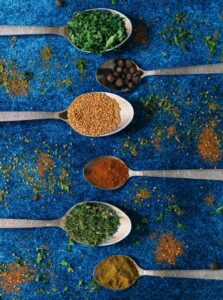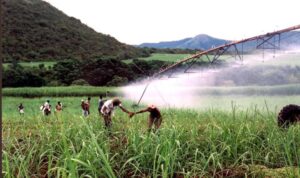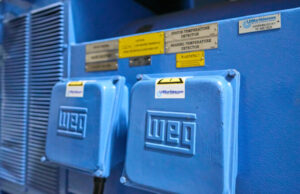Introduction
The leather industry has been around for thousands of years – ever since humankind began hunting animals.
Hides and skins are a by-product of the meat industry, so supply does not react to demand for leather, but for meat. Leather is used in the automotive, footwear, furniture, clothing, leather goods and exotic leathers (e.g. ostrich) sectors.
Leather makes a contribution to the quality of everyday life: virtually everyone wears or uses one or more leather products on a regular basis.
The following are the main categories of skins or hides according to species:
- Bovine (cattle) hides dominate the supply of leather in South Africa. They are mainly by-product of meat production supplied by feedlots.
- Sheep skin is produced with or without wool mainly for export market.
- South Africa does not have significant supply of pig skin as this tends to be part of the meat.
- The supply of goat and kid skins is low as the majority of goats are slaughtered outside the abattoirs.
- Unlike bovine, ostrich is bred primarily for its skin; and ostrich meat becomes a by-product. Ostrich leather is unique with its feather quill pattern. This gives it extra strength and durability which is 7 times stronger than bovine (cattle) hide. Ostrich leather is used to produce handbags, wallets, shoes, clothing etc.
- Many wild animals including elephants and buffalo are main sources of leather.
- Crocodiles and snakes are bred for their skins.
Sources: A Profile of the South African hides, skins and leather market value chain, available at www.dalrrd.gov.za; The introduction to leather at www.leathercouncil.org.
International business environment
The leading exporters of leather are Italy, US, Brazil, China and Germany (Statista, 2024). The exporters of leather goods are China, Italy and France (Statista, 2024).
Further reference:
- Visit https://leather-council.org, website of the International Council of Tanners.
- The United Nations Industrial Development Organisation (UNIDO) has a Leather and Leather Products Industry Panel (the Leather Panel). See https://leatherpanel.org.
- Find international news and commentary at https://leatherbiz.com.
- “Serving the global leather & fashion industries”, www.aplf.com. Its Leather Pipeline is an “exclusive fortnightly market intelligence report”.
South Africa imports and exports
South Africa Exports of raw hides and skins (other than furskins) and leather was US$168.45 Million during 2023, according to the United Nations COMTRADE database on international trade (Trading Economics, 2024).
Find the Department of Agriculture notes to State Veterinary Officers on exporting raw hides and skins from South Africa at www.elsenburg.com/wp-content/uploads/2022/03/025-VPN-25-Export-of-raw-hides-and-skins-from-South-Africa..pdf
The A Profile of the South African hides, skins and leather market value chain, which used to be an annual feature on the Department of Agriculture website, looked at exports and imports, and the tariffs and standards to be satisfied to access various markets like the EU, China and the USA.
Local business environment
Find statistics on hides and skins at www.agrilevy.co.za.
- The demand for hides by the automotive sector out-strips the number of cattle slaughtered locally.
- Over 60-70% of South African hides are regarded as suitable for automotive leather.
- The increase in feedlots over the years has led to better quality hides (animals spend less time in the veld). These can be rated higher than other sub-Saharan African and most Asian hides, but they remain inferior to most hides from Australia, Argentina, the US and Europe.
- skin & hide supply (farmers, feedlots and abattoirs)
- semi-processed leather
- finished leather
- finished products
- the market
For a more detailed consideration, consult the publication A Profile of the South African hides, skins and leather market value chain (see “Websites and publications” heading).
Hides: an opportunity for commercialisation?
Skins and hides are a rich source of raw material in South Africa’s leather value chain. Most abattoirs have partnerships with skins and hide traders who export raw skins and hides as well as low value-added semi-finished leather products.
At the same time, hides from communal cattle farmers are thought to be going to waste or attracting only very low price in informal markets. These hides are a communal resource whose value would be greatly enhanced if they could be processed into tanned leather and supplied for further value addition in the labour-intensive footwear, furniture and automotive leather value chains.
The skins & hides available in the informal sector could also create business opportunities for communal entrepreneurs to act as emerging hide merchants; and the sector could be substantially upgraded by training informal slaughter operators, emerging farmers and herders to prepare hides, collect and sell them to local tanneries. A main impact will be better slaughtering practices by communal farmers, generating better quality hides which fetch higher market prices.
Source: the Department of Trade, Industry and Competition
National strategy and government contact
Hides and leather form part of the clothing, textile, footwear and leather (CTFL) subsector. The Retail–Clothing Textile Footwear Leather (R-CTFL) Master Plan 2030, finalised in 2019, applies. Find the progress presentation to the Portfolio Committee (2022) at www.thedtic.gov.za/wp-content/uploads/the-dtic-Retail-CTFL-Master-Plan.pdf
The Clothing Textile Footwear Leather Growth Programme (CTFLGP) requires industry “to commit to additional import substitution, new jobs and transformation”. It included a Competitiveness Improvement facility which provides investment support in the form of a 50% grant and a 50% interest free 5 year loan, with a capital moratorium of up to 24-months. Find details under “Financial Assistance” at www.thedtic.gov.za.
The Automotive Investment Scheme (AIS) and its sub-components are incentives to the automotive sector. This supports the demand for leather.
The Cape Clothing and Textile Cluster (CCTC) is a not-for-profit initiative jointly established by government and industry to boost the competitiveness of the clothing, textile, footwear and leather (CTFL) manufacturing industry in the Western Cape. See https://capeclothingcluster.org.za.
KZNCTC Accelerator https://kznctc.org.za Supports the clothing, textile, footwear and retail firms in KZN
Previous government programmes covering the clothing, textiles, leather and footwear sector included the Industrial Policy Action Plans (IPAPs) and the Competitiveness Improvement Grant (CIP). Some interventions under these programmes were the National Footwear Leather Cluster (NFLC), the Exotic Leather Cluster (ELC) (crocodile and ostrich leather), and the Communal Hides Commercialisation Pilot Project.
Role players
Further reference:
- The Skin, Hide and Leather Council (SHALC) is the legal owner of the Genuine Leather Mark, applied by manufacturers and retailers in South Africa to distinguish genuine leathers from inferior imitations.
- The South African Meat Industry Company (SAMIC) does independent hides and skins audits on behalf of DALRRD for export purposes at abattoirs, intermediate stores and harbours.
- Red Meat Abattoir Association (RMAA)
- For a list of SAFLEC companies (footwear manufacturers, belt manufacturers, components & services, tanneries, and handbag manufacturers), visit www.saflec.co.za.
Websites and publications
Visit the websites listed earlier on this page.
- Find the guideline “Hides”, one of the many, on the KwaZulu-Natal Department of Agriculture website at www.kzndard.gov.za.
- Look whether the DALRRD Directorate Marketing has resumed publishing the annual A Profile of the South African hides, skins and leather market value chain at www.dalrrd.gov.za.
- Find details of the footwear and leather trade magazines at www.svmag.co.za.
- www.leathercouncil.org – the International Council of Tanners website, a “definitive” international website.
Some articles:
- Reporter. 2024, September 11. “Textile industry remains a priority for government “. SA News. Available at www.sanews.gov.za/south-africa/textile-industry-remains-priority-government
- Tshivhidzo E. 2024, September 12. “Sector master plans critical to investment, boosting exports, creating jobs”. SA News. Available at www.sanews.gov.za/south-africa/sector-master-plans-critical-investment-boosting-exports-creating-jobs
- Reporter. 2024, May 3. “CTFL Masterplan has had a positive impact on local industry”. SA News. Available at www.sanews.gov.za/south-africa/ctfl-masterplan-has-had-positive-impact-local-industry
- Reporter. 2023, May 20. “The finest quality hand-made leather products sourced locally”. Global Africa Network. Available at www.globalafricanetwork.com/company-news/experience-hand-made-perfection/
- Bezuidenhout R. 2022, March 29. “How to earn more from hides and skins”. Farmer’s Weekly. Available at www.farmersweekly.co.za/farming-basics/how-to-livestock/how-to-earn-more-from-hides-and-skins/






